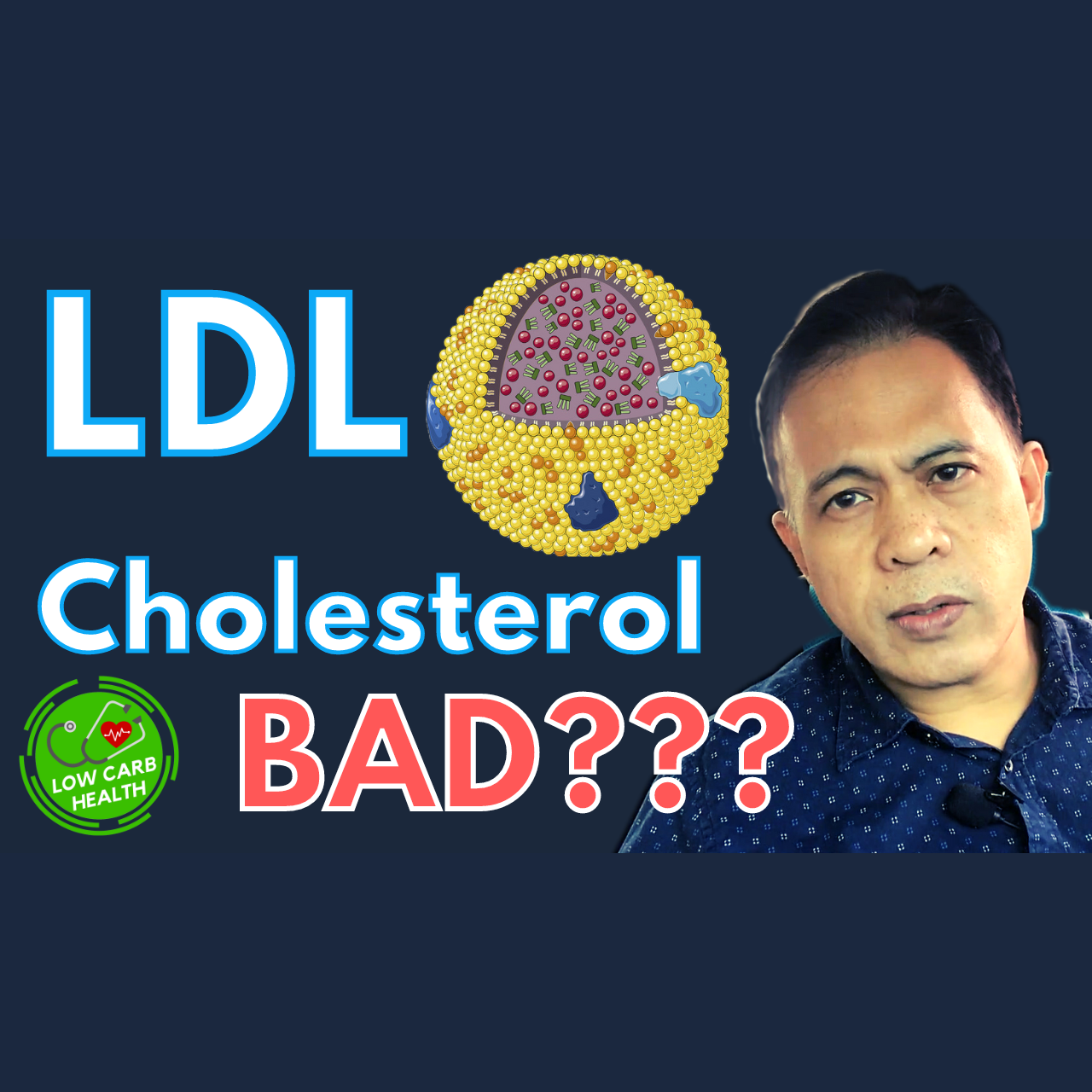Recently, a patient asked me: "My LDL in my lipid profile is high. I was advised to stop my KETO DIET because of my risks for heart attack. What should I do?"
"I'M CONCERNED ABOUT MY HIGH LDL"
Ever since that patient has gone low carb/LCHF, one big concern he has raised is this: "Even though my triglycerides are LOW and my “good cholesterol” HDL level is HIGH, yet I'm afraid because my LDL is going UP!" It was even his doctor-friend who warned him against continuing his KETO diet!
So here goes!
In the world of NUTRITION, there are big misconceptions that we have to UNLEARN and RELEARN! As Dr. Ken Berry has accurately titled in his book, “LIES MY DOCTOR TOLD ME,” YES there COULD be certain “lies” that your doctor has told you! I was once guilty of that before. And up to now, MOST DOCTORS worldwide are still guilty of that!
Because frankly speaking, we doctors really haven’t got much real knowledge taught to us about the Science of Nutrition in Medical School. And most of what we’ve learned came from lectures presented to us in industry-sponsored conferences!
CHOLESTEROL AND LIPOPROTEINS

FIRST, let us understand CHOLESTEROL!
LDL stands for low-density lipoprotein, which is a type of cholesterol commonly referred to as "bad" cholesterol. It is one of the different kinds of LIPOPROTEIN molecules circulating in the bloodstream. LDL is often called in mainstream medicine as as the "bad cholesterol" because it can contribute to the buildup of plaque in the arteries, which can increase the risk of heart disease and stroke.
However, not all LDL cholesterol is the same. LDL particles can vary in size and density, and there are actually studies that suggest that smaller, denser LDL particles (sdLDL) may be more harmful than larger, less dense buoyant particles (lbLDL). Thus, there are good and bad LDL, which refer to the different types of LDL particles.
Large, fluffy and buoyant lbLDL particles are often considered "good" because they are less likely to contribute to arterial plaque buildup. Small, dense LDL particles are considered "bad" because they are more likely to penetrate the arterial wall and contribute to plaque buildup.

THE MODERN PARADIGM: CHOL/HDL, TG/HDL & TyG INDEX
This is important: I now pay more attention to the TRIGLYCERIDE levels, the ratios of Chol/HDL and TG/HDL, and what is called the Triglyceride-Glucose (TyG) Index. If your LDL is kind of “high” BUT you have an amazing TG/HDL ratio (like a TG/HDL ratio of < 1 wherein your TRIGLYCERIDE level is lower than your HDL), and if you also have an amazing TyG Index (which is less than 4.49), then I’d say you should be in tiptop shape. Both the TG/HDL ratio as well as the TyG Index are good surrogate markers for determining your level of insulin resistance – the lower they are, the better you are.

LEAN MASS HYPER-RESPONDERS (LMHR)

With regards to elevated LDL levels among those doing keto or low carb, DAVE FELDMAN has come up with studies regarding the Lean Mass Hyper Responder (LMHR) phenotype. The Lean Mass Hyper Responder (LMHR) phenotype is a term used to describe a specific subgroup of people who experience a significant increase in their LDL levels when they adopt a low-carbohydrate, high-fat (LCHF) diet, such as a ketogenic diet.
The term "lean mass" refers to the fact that these individuals tend to have a relatively low body fat percentage and a higher amount of lean muscle mass. "Hyper responder" refers to the fact that their LDL cholesterol levels may increase dramatically in response to this low carbohydrate diet, sometimes reaching levels that would be considered high by conventional medical standards.
NOT everyone who follows a low-carb, high-fat diet will experience this type of response, and not all LMHRs will have negative health outcomes. Some studies suggest that in LMHRs, the increase in LDL cholesterol is largely due to an increase in the number of large, buoyant LDL particles, which may not be as harmful as smaller, denser LDL particles. DAVE FELDMAN and his collaborators are doing studies currently along these lines.

READ MORE...
I’m linking herewith pages in the Low Carb Health Doctor website dedicated to certain scientists exploring this topic. This would include: DAVE FELDMAN, A/PROF DR. KENNETH SIKARIS, and NINA TEICHOLZ.
NINA is a science journalist and the author of best-selling book The Big Fat Surprise & she also has this presentation about the health perils of vegetable oils. Go watch their videos in my Low Carb Health Doctor website and learn more.
Let’s #FightMetabolicSyndrome✊ AND let’s all go livin’ La Vida LowCarb! 🎉🎇



Comments ()